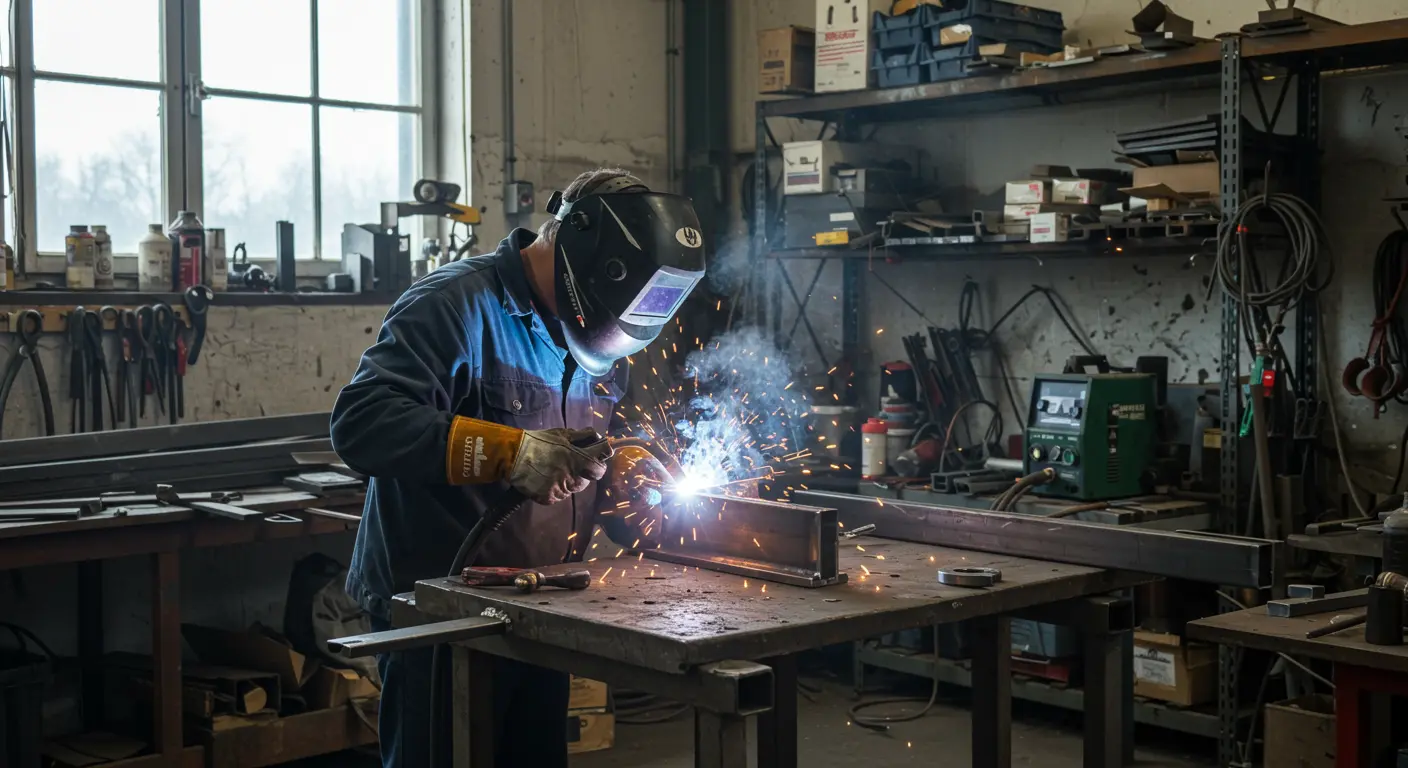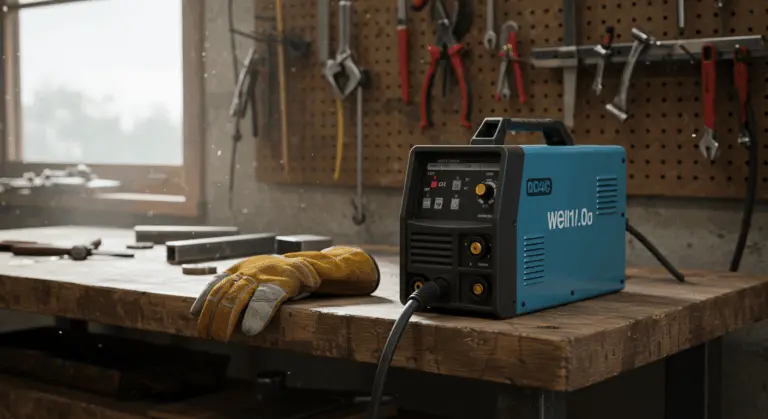Understanding the Welding Profession
Welding is a skilled trade that involves joining metals together through the application of heat and pressure. It’s an essential process in manufacturing, construction, and countless other industries that rely on metal fabrication. Understanding what welding involves helps you decide if it’s the right career path for you.
At its essence, welding demands technical expertise, physical dexterity, and meticulous attention to detail. Welders must master various materials and equipment to forge strong, durable joints that satisfy rigorous industry standards. Common welding methods include:
-
Shielded Metal Arc Welding (SAW)
-
Gas Metal Arc Welding (GMA)
-
Gas Tungsten Arc Welding (GTA)
The profession extends far beyond simply melting metal. A welder’s responsibilities often encompass:
Pros of a Welding Career
A welding career offers numerous advantages that make it an attractive option for those seeking a stable and fulfilling profession. One major benefit is The relatively low barrier to entry. Unlike many careers requiring four-year degrees, welding typically requires completion of a certificate or associate degree program, allowing you to enter the workforce more quickly and with considerably less student debt.
The versatility of welding skills offers another major advantage. Welders are needed across countless industries—from automotive and aerospace to construction and energy production. This diversity ensures you can discover work environments that align with your preferences—whether in a controlled shop setting or out in dynamic field conditions.
For those who enjoy creating tangible results, welding provides immediate satisfaction. At the end of each day, you can see the physical manifestation of your work—structures built, components repaired, products manufactured. This hands-on aspect appeals strongly to many who prefer active work over desk jobs.
Welding also offers opportunities for creativity and innovative problem-solving. While following specifications is essential, welders frequently must adapt techniques to unique situations and devise solutions to intricate joining challenges. This combination of technical skill and creative thinking makes welding intellectually stimulating as well as physically engaging.
Job Security in Welding
A major reason to consider welding as a career is the strong job security. The demand for skilled welders stays strong across numerous industries, creating a stable employment landscape even during economic downturns. According to the US Bureau of Labor Statistics, the welding profession is projected to maintain steady growth, making it relatively resistant to financial and social fluctuations that might devastate other career fields.
This job security stems from several factors:
-
Essential Industry: Welding serves as a fundamental process in manufacturing, construction, and infrastructure—sectors that continue operating even during severe economic downturns.
-
Skills Gap: More experienced welders are retiring than new ones are entering the field, creating a persistent labor shortage.
Additionally, welding skills are difficult to automate completely. While some welding processes have been mechanized, many applications still require the expertise, judgment, and adaptability of skilled human welders—particularly for complex or custom work. This human element offers protection against complete job displacement through automation.
Welding Salary Expectations
Welding offers competitive compensation that often exceeds what many other trades—or even some positions requiring four-year degrees—can provide. According to the US Bureau of Labor Statistics, the median annual wage for welders, cutters, solderers, and blazers was $48,940 in 2022, or about $23.53 per hour. This figure represents the middle point, meaning half of all welders earn more than this amount.
What makes welding financially attractive is the strong earning potential for those with specialized skills or certifications. Welders who master high-demand specialties—underwater welding, pipeline welding, or aerospace applications—can command significantly higher salaries, sometimes exceeding $100,000 annually. Additionally, opportunities for overtime work are common in the industry, further increasing income potential.
The employment outlook remains stable, with projected growth of 1% from 2022 to 2032. This rate will sustain over 463,000 positions by 2033, ensuring abundant opportunities, particularly in specialized areas.
Diverse Job Opportunities
Welding offers diverse career paths of career paths and work environments, with opportunities spanning nearly every industrial sector imaginable.
Specialized welding roles offer distinctive experiences and often command premium compensation:
-
Pipeline Welders: Work on critical oil and gas infrastructure.
-
Underwater Welders: Combine diving and welding skills for marine applications.
-
Fabrication Welders: Create custom metal products in workshop settings.
-
Structural Welders: Help build the frameworks for buildings and bridges.
Geographic flexibility is another advantage. Welding skills are sought after virtually everywhere—from bustling urban centers to remote locations. This mobility allows welders to choose where they want to live or pursue travel opportunities through jobs requiring movement between project sites. Some welders even find international assignments, working on global infrastructure projects or in overseas manufacturing facilities.
As welders accumulate experience, diverse career advancement opportunities emerge:
-
Supervisory or quality control roles
-
Certified Welding Inspector (CGI) positions
-
Welding engineering or sales
-
Instructor or training positions
This growth potential ensures that welding can become a lifelong career with continuously evolving challenges.
Cons of a Welding Career
While welding offers many advantages, it’s important to consider the challenges and drawbacks before committing to this career path. The physical nature of welding work can take a significant toll on the body over time. Welders often work in awkward positions—crouching, bending, or reaching overhead for extended periods—which can lead to musculoskeletal strain and chronic fatigue.
Work environments can be challenging. Depending on the specific role, welders may face extreme temperatures, confined spaces, dangerous heights, or harsh outdoor conditions—rain, snow, or scorching heat. Construction sites, shipyards, and manufacturing facilities can be noisy, dusty, and sometimes hazardous if proper safety protocols aren’t followed.
Learning to weld takes time and practice. Becoming proficient requires significant practice and patience. Different welding processes and materials demand specific techniques, and achieving the precision required for critical applications takes considerable time to master. This learning process can be frustrating for beginners and requires dedication to overcome.
Work schedules in welding can be grueling, with many projects demanding overtime, weekend work, or night shifts to meet tight deadlines. During peak periods, welders may work exhausting hours, which can severely impact work-life balance. Additionally, project-based work can sometimes lead to periods of unemployment between jobs, particularly for those in construction or contract-based positions.
Physical Demands and Risks
Welding is physically demanding that requires strength, stamina, and dexterity. Welders routinely lift heavy materials and equipment, sometimes weighing 50 pounds or more. They frequently work in uncomfortable positions—kneeling, crouching, or reaching overhead—often for extended periods. This physical strain can lead to fatigue and, over time, may contribute to chronic musculoskeletal issues like back pain, joint problems, and repetitive stress injuries.
Welders also face health hazards:
-
Intense Light and Radiation: The welding arc produces bright light and harmful ultraviolet (UV) radiation that can damage eyes and skin without proper protection.
-
Harmful Fumes: Inhaling metal particles and gases can cause acute respiratory issues, metal fume fever, and long-term neurological or lung damage.
The work environment itself presents additional risks:
-
Burns from hot metal or sparks
-
Electrical shocks
-
Working at heights or in confined spaces
-
Proximity to heavy machinery and flammable materials
In specialized fields like underwater welding, these risks are dramatically amplified.
Reducing these risks requires following to safety protocols and consistent use of personal protective equipment (PPE)—helmets with proper filters, flame-resistant clothing, gloves, and respiratory protection when needed. Physical fitness and proper body mechanics are also essential for managing the physical demands of the profession and reducing the risk of injury.
Work Environment in Welding
The work environment for welders varies dramatically depending on the industry and specific role, but challenging conditions are common across the field. Many welders work in manufacturing facilities or fabrication shops where they may be exposed to loud noise, dust, and fumes throughout their shifts. These environments often lack climate control. This means welders might endure excessive heat in summer and bitter cold in winter, in addition to the intense heat generated by the welding process itself.
For those in construction, shipbuilding, or field welding, outdoor work is commonplace, exposing welders to all weather conditions. Rain, snow, wind, and extreme temperatures can make precision work significantly more difficult and physically taxing. These welders may also work at significant heights on structures like buildings or bridges, adding an element of risk to their daily tasks.
Confined space welding presents its own unique set of challenges. Working inside tanks, pipes, or other restricted areas severely limits mobility, reduces air circulation, and can create intensely claustrophobic conditions. These spaces often require additional safety measures and monitoring to prevent hazardous gas buildup or oxygen depletion.
Despite these challenges, many welders find deep satisfaction in overcoming difficult working conditions to produce quality work. Proper safety protocols, appropriate protective equipment, and employer-provided accommodations can significantly improve working conditions and mitigate many environmental hazards.
Skill Mastery and Continuous Learning
Welding requires continuous learning and skill development throughout your career and adaptation to new technologies and techniques. Mastering even one welding process like Shielded Metal Arc Welding (SAW) requires significant practice and experience. Most professional welders need proficiency in multiple processes, including Gas Metal Arc Welding (GMA) and Gas Tungsten Arc Welding (GTA), each with its own steep learning curve.
The complexity increases when considering the vast variety of metals and alloys welders must work with. Each material—from carbon steel and aluminum to stainless steel and exotic alloys—demands specific techniques, precise settings, and sometimes entirely different equipment. Mastering these variations takes years of practice and experience, often through trial and error alongside formal training.
Industry standards and certifications add another layer to the learning requirements. Organizations like the American Welding Society (AWS) offer certifications that verify a welder’s skills for specific applications. These certifications often require renewal and may demand additional testing as standards continuously evolve. Many employers and clients require these certifications, making them essential for career advancement.
Technological advances in the field mean that even seasoned welders must continually update their knowledge. New equipment, automated systems, and improved techniques emerge regularly, requiring welders to adapt their skills. Those who fail to keep pace with these developments may find their career opportunities limited over time.
Continuous learning is both challenging and rewarding. While it demands ongoing investment of time and effort, it also ensures that welding remains intellectually stimulating throughout one’s career—with new challenges to master and skills to perfect even after decades in the profession.
Getting Started in Welding
To start a welding career, research different welding methods (e.g., SAW, GMA, GTA) and the industries that utilize them. This helps you identify a specialization and target your training accordingly.
The next step is formal education, which typically requires a high school diploma or GED. Seek out accredited programs at community colleges or technical schools that provide extensive hands-on practice. These programs typically last 6–18 months.
During training, focus intensively on developing fundamental skills across different welding processes. Most programs include job-site simulations that prepare you for real-world applications and challenges. Seize every opportunity to practice on different materials and in various positions, as this versatility will make you significantly more employable upon graduation.
After completing formal education, pursuing certifications from organizations like the American Welding Society (AWS) can significantly improve your employability. These certifications validate your skills to potential employers and may be required for certain positions or industries. Many schools offer certification preparation as part of their programs or as additional courses.
Gaining practical experience through entry-level jobs or apprenticeships is essential. While initial pay may be modest, the mentorship and real-world skills gained are invaluable for career development. Many schools offer job placement assistance to help graduates find these first positions.
Conclusion: Is Welding a Good Career for You?
Welding can be an excellent career choice for the right person, offering a unique combination of technical skill, creativity, and tangible results. If you enjoy working with your hands, solving problems, and seeing the immediate results of your labor, welding might be an ideal fit. The profession rewards attention to detail, spatial awareness, and a commitment to quality—traits that many find deeply satisfying to exercise in their daily work.
Practically speaking, welding offers strong advantages. The field provides solid income potential, with median wages exceeding $48,000 annually and significantly higher earnings possible with specialization and experience. Job security is strong due to consistent demand across multiple industries and a current shortage of skilled welders. The relatively short training period means you can enter the workforce quickly with minimal educational debt compared to many other careers.
However, welding isn’t for everyone. The physical demands, potential health risks, and sometimes challenging work environments require honest self-assessment. If you have physical limitations, sensitivity to fumes or bright light, or strong preferences for climate-controlled environments, you might find the daily realities of welding work difficult to sustain long-term.
Career changers often discover welding particularly accessible, especially those with transferable skills like mechanical aptitude, attention to detail, or problem-solving abilities. The field welcomes people from diverse backgrounds and offers multiple entry points at different stages of life.
Ultimately, welding is a skilled trade critical to infrastructure and manufacturing. For those who embrace its challenges, it offers a reliable income and the deep satisfaction of mastering a craft. A willingness to learn, adapt to physical demands, and continuously improve can lead to a rewarding, sustainable career with significant growth potential.


